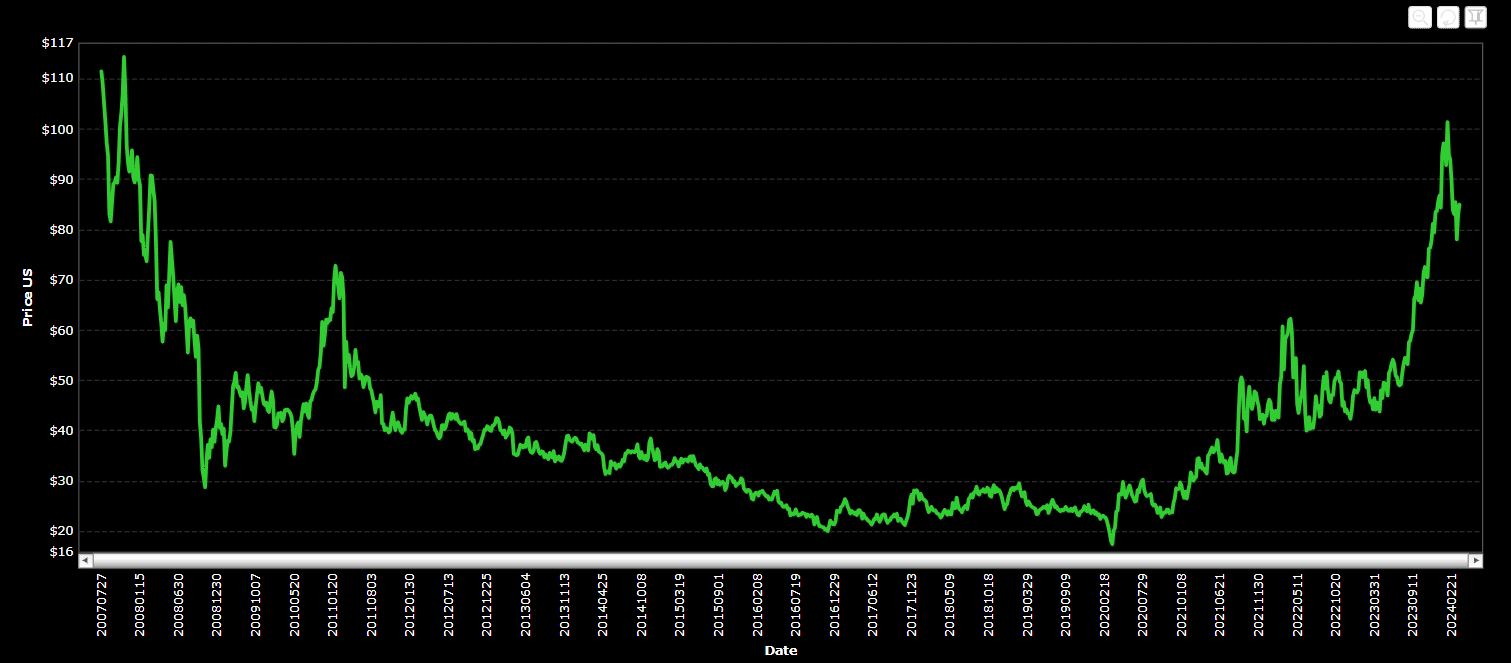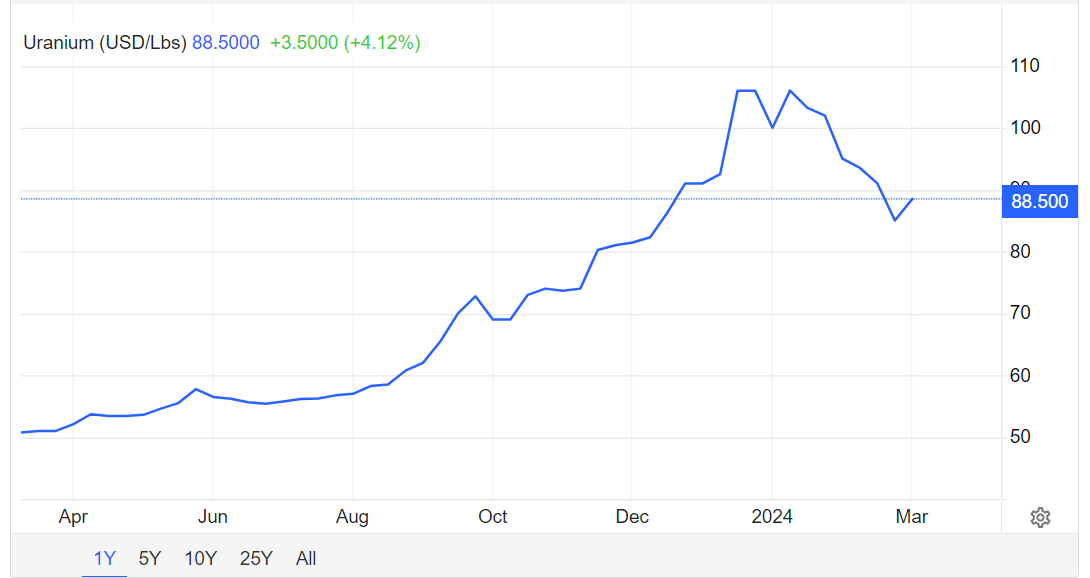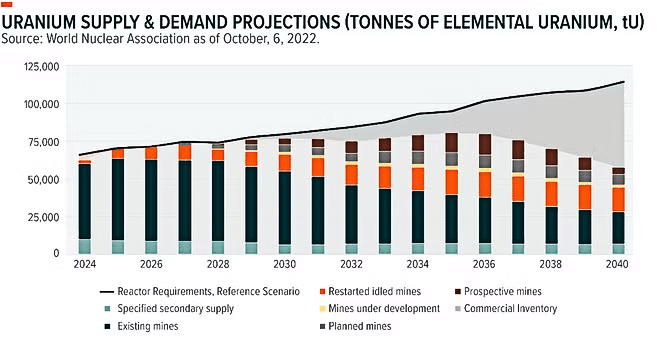Uranium prices have experienced a decline to $89 per pound, marking the 6th consecutive week of decreases since reaching a 16-year high of $106 in early February. This drop comes as market participants continue to evaluate the evolving dynamics following the recent surge in prices.
Uranium’s Rollercoaster: From Heights to Pullbacks
Uranium, a dense metal found in most rocks, primarily serves as fuel in nuclear power plants. The standard contract unit for uranium is 250 pounds of U3O8 and is traded on the New York Mercantile Exchange. Key uranium-producing countries include Kazakhstan, Canada, and Australia.
Following a strong bullish trend that propelled uranium prices to levels unseen since the Fukushima disaster in 2011, the metal has encountered a 22% pullback over the past six weeks.

The elevated U3O8 prices have led utilities to abstain from spot market purchases, instead relying on previously established long-term contracts. Moreover, speculative physical uranium holders have capitalized on the recent rally to secure profits.
Additionally, the anticipation of a sustained increase in demand, signaled by major economies, has prompted mines to resume uranium projects in US mountain states, further contributing to the moderation of prices.
Despite the decrease in futures trading prices to $88.50 per pound in New York, current prices still surpass last year’s average. This resilience in the market reflects ongoing bullish sentiment towards uranium.

The uranium prices reported by Trading Economics are based on over-the-counter (OTC) and contract-for-difference (CFD) financial instruments.
Despite this correction, analysts and experts remain optimistic about the long-term prospects of nuclear fuel. Industry insiders suggest that the market has likely established a new baseline, supported by robust demand forecasts and supply constraints.
Jonathan Hinze, president of the nuclear industry research firm UxC, expressed confidence in uranium’s fundamentals, stating, “We have reached a bottom”.
He emphasized the enduring demand for uranium and noted that supply has yet to catch up with this demand.
Recent global annual production of uranium has ranged from 55,000 – 65,000 tons of uranium metal, roughly matching fuel demand, according to the International Atomic Energy Agency. As per the Nuclear Energy Agency, an estimated 60,000 tons of uranium are required annually to fuel the world’s 436 operating nuclear reactors.
Uranium Market Resilience and Geopolitical Complexities
In recent developments, Kazatomprom, the world’s leading uranium producer responsible for 40% of U3O8 supply, refrained from announcing further production downgrades in its latest earnings report. However, the company continues to caution about limited sulphuric acid supplies, which could pose additional challenges in meeting its guidance.
Projections from major producers like Cameco indicate impending supply deficits in the uranium market. The International Energy Agency forecasts a demand of 200 million pounds by 2040, while Kazatomprom predicts a global shortfall of 21 million pounds by 2030, rising to 147 million pounds by 2040.
According to the World Nuclear Associations data as shown in the chart below, demand would continuously increase by 2040 while supply would be limited. This leaves a huge gap between the metal’s supply and demand requirements worldwide by that period.

Geopolitical factors add complexity to the supply outlook. For instance, the U.S. is considering a bill to ban imports of enriched Russian uranium, which is currently under review in the Senate.
Given the increasingly uncertain future of nuclear fuel, countries worldwide are moving to secure their power generation supply.
Sweden’s Climate Minister Romina Pourmokhtari has announced plans to lift the uranium mining ban as early as May. This is a good development for the EU market, as Sweden holds 80% of the EU’s uranium deposits.
Meanwhile, the Australian Chamber of Commerce and Industry (CCI) has urged the state government to reconsider the uranium ban. According to The West Australian, the CCI’s analysis suggests that uranium mining could generate over $650 million in exports and create 9,000 jobs.
Despite holding around one-third of global uranium resources, BHP’s Olympic Dam remains Australia’s sole active nuclear fuel producer.
As uranium prices experience a notable decline, the market witnesses a shift from recent highs, prompting a reassessment of supply-demand dynamics and geopolitical factors. Despite the pullback, optimism persists in the industry, fueled by projections of impending supply deficits and increasing global interest in nuclear power as a climate change solution.
- READ MORE: No Net Zero Without Uranium: Here’s Why

